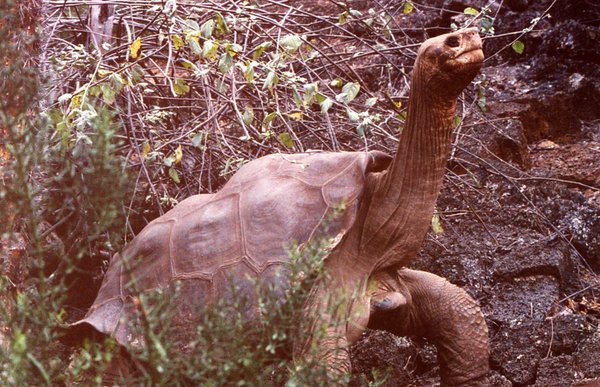Can a tortoise cure cancer?
Published 05-DEC-2018 12:44 P.M.
|
2 minute read
Hey! Looks like you have stumbled on the section of our website where we have archived articles from our old business model.
In 2019 the original founding team returned to run Next Investors, we changed our business model to only write about stocks we carefully research and are invested in for the long term.
The below articles were written under our previous business model. We have kept these articles online here for your reference.
Our new mission is to build a high performing ASX micro cap investment portfolio and share our research, analysis and investment strategy with our readers.
Click Here to View Latest Articles
The humble tortoise lives to an average of approximately 150 years. This could be due to its vegan diet, or perhaps its quiet 'slow and steady wins the race' lifestyle. Or it may just be the massive hard shell that acts as the ultimate security system, combined with the geographic isolation that minimises predatory behaviour towards the tortoise.
The tortoise's secret ability to live long and prosper has, of course, attracted human attention.
New International research published in the journal, Nature Ecology & Evolution, offers insights into the longevity of one tortoise in particular: the lost in love Lonesome George, a male Pinta tortoise discovered in 1971 and recognised as the last of his species.

George lived a further 40 years, never able to find a mate (there is still no Tinder for tortoises), and passed on in 2012. However, the discovery of the near-ancient creature sparked a frenzy of research activity.
An international team of researchers set out to sequence the genome of Lonesome George, and also sequenced the genome of a giant tortoise from the island of Aldabra in the Seychelles.
The research team consisting of Yale University, University of Oviedo, Galapagos National Park Service, Flinders University and another nine institutions, compared both genomes with those of other species, including humans.
They then analysed more than 3,000 genes thought to be potentially involved in cancer and ageing.
“Giant tortoises are amongst the longest living animals and therefore must have evolved mechanisms for reducing their risk of developing cancer,” says study co-author, Professor Luciano Beheregaray, from the Molecular Ecology Lab at Flinders University.
“Because of that, they provide an excellent model to study longevity and age-related diseases.”
The researchers identified several variants in the tortoise genomes that potentially affect six of the nine hallmarks of ageing.
None of these gene variants have been previously associated with the ageing process, so this breakthrough opens fresh research avenues which could lead to an improved understanding of the tortoise’s longevity.
They also found that giant tortoises have several expanded tumor suppressor genes, as well as alterations in two genes which are known to contribute to cancer.
While these findings point to evolutionary strategies linked to increased lifespan and age-related diseases, further studies are needed to determine if these features are indeed associated with suppressing cancer.
“The research to unveil the genome of Lonesome George builds on two decades of genetic studies about the evolution of Galapagos giant tortoise populations”, notes Professor Beheregaray.
The entire study, 'Giant tortoise genomes provide insights into longevity and age-related disease', is freely available here.
It’s a fascinating read, but if, unlike the tortoise, you don’t have the time to read the full report, you can remember George here...
General Information Only
S3 Consortium Pty Ltd (S3, ‘we’, ‘us’, ‘our’) (CAR No. 433913) is a corporate authorised representative of LeMessurier Securities Pty Ltd (AFSL No. 296877). The information contained in this article is general information and is for informational purposes only. Any advice is general advice only. Any advice contained in this article does not constitute personal advice and S3 has not taken into consideration your personal objectives, financial situation or needs. Please seek your own independent professional advice before making any financial investment decision. Those persons acting upon information contained in this article do so entirely at their own risk.
Conflicts of Interest Notice
S3 and its associated entities may hold investments in companies featured in its articles, including through being paid in the securities of the companies we provide commentary on. We disclose the securities held in relation to a particular company that we provide commentary on. Refer to our Disclosure Policy for information on our self-imposed trading blackouts, hold conditions and de-risking (sell conditions) which seek to mitigate against any potential conflicts of interest.
Publication Notice and Disclaimer
The information contained in this article is current as at the publication date. At the time of publishing, the information contained in this article is based on sources which are available in the public domain that we consider to be reliable, and our own analysis of those sources. The views of the author may not reflect the views of the AFSL holder. Any decision by you to purchase securities in the companies featured in this article should be done so after you have sought your own independent professional advice regarding this information and made your own inquiries as to the validity of any information in this article.
Any forward-looking statements contained in this article are not guarantees or predictions of future performance, and involve known and unknown risks, uncertainties and other factors, many of which are beyond our control, and which may cause actual results or performance of companies featured to differ materially from those expressed in the statements contained in this article. S3 cannot and does not give any assurance that the results or performance expressed or implied by any forward-looking statements contained in this article will actually occur and readers are cautioned not to put undue reliance on forward-looking statements.
This article may include references to our past investing performance. Past performance is not a reliable indicator of our future investing performance.
